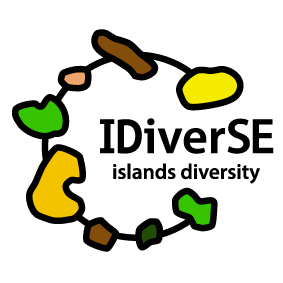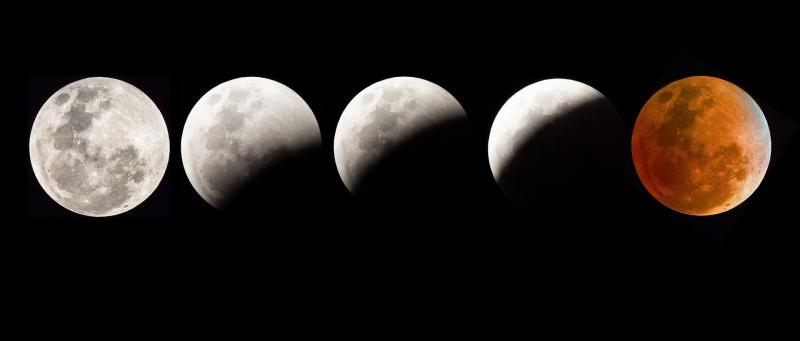
Hosted by OSOS , contributed by nuclio on 2 April 2020
Introduction
Hello there explorer,
Have you ever looked to the Moon? This activity will guide you to an observational project where you'll record daily observations of our nearest neighbor in space. While you complete your observation log, interact with your community to share knowledge about the moon phases.
Information for teachers
This accelerator was created in the framework of the project - IDiverSE (Islands Diversity for Science Education - 2017-1-PT01-KA201-035919), co-financed by the Erasmus+ agency of the European Union).

This is a STEAM activity that targets students from 5th to 12th grade, but adaptable to younger students. The texts are directed to the teacher. Teachers are invited to explore it, copy it and edit whatever they feel necessary before they share it with their students.
Supporting documents and translations to other languages can be found through the following link: https://idiverse.eu/design-thinking-with-the-moon/
For any aditional info on this accelerator, please contact info@idiverse.eu
Learning Objectives
Students will contact the scientific method in an Inquiry-Based activity that will lead them to learn important concepts about the Earth-Moon-Sun system.
While going through this project, students will develop fundamental skills such as problem solving, critical thinking, communication, creativity and collaboration. They will also develop other important skills such as tolerance and respect since they will be collaborating with students from different cultures and different environments.
Opportunities to collaborate with other stakeholders
Students will be challenged to interview, discuss and collaborate with their families and other community members as well as to collaborate with participants from different regions of the world. Teachers should encourage students to share their findings in a collaborative platform as well as with family members and any other important stakeholders.
More specifically:
1 - In the Feel phase, students will use a collaborative platform to collect data and compare it with data from other communities.
2 - In the Imagine phase, students will be advised into bringing the problem to their families and have important discussions about the causes and solutions to the problem at hands.
3- In the Create phase, students will be encouraged to design a realistic model of the Earth-Moon-Sun system that explains lunar phases and eclipses.
4 - In the Share phase, students will reach out to the whole community to share their work.
Responsible Research and Innovation
One of the key aspects of OSOS is the inclusion of RRI - Responsible Research and Innovation - principles (RRI-Tools.eu). This is how this accelerator fits in the RRI model:
|
Governance |
This accelerator is based on a fundamental key point which is to teach students what science is and how to make a valid and respectful science research. It highlights the fact that science needs to be shared in order to be valid, it needs to be transparent and collaborative so as to contribute to the development of our society. In this project, students reflect with the community on the problem. Furthermore, students will share their results and conclusions with other communities worldwide, through a platform called globallab. |
|
Public engagement |
Students will interview their communities. After collecting their data, students will discuss with their parents, other family members, friends, community, etc, about the answers they collected. The whole activity will focus on the engagement of students with their community so they can converge on the best answers to their questions. |
|
Gender Equality
|
The problematic involved in this project is transversal for all humans in the world, regardless of their gender. At no moment, the gender of the students will be asked or relevant. On the resources created for the teachers advise is given in order to provide equal opportunities, not only for both genders but also among all the different personalities. In the guidelines given to the students an effort is made to use both male and female role models as inspiration, as well as male and female icons and individuals in pictures. Teacher are also advised to find experts of all genders and invite them to work with their students. |
|
Science Education |
Students will be engaged in Inquiry-Based activities that will lead them through the scientific method and reasoning. It is expected that after creating their projects, students will have understood what science is and how scientific knowledge can be obtained and communicated. By working with the community and sharing their work in the end, students will bring science education to their community as well as awareness for important scientific questions. |
|
Ethics |
During the project students will understand that cooperating and collaborating is a much more valuable effort than competing, and that knowledge and good ideas should be used in an ethical way and shared with others. When in collaboration, Scientists can overcome nearly any obstacle and provide what is necessary for a safe, developing and growing society |
|
Open Access |
After finishing their research, students will share all their work with the community, providing a fully open access to their data and conclusions. |
Feel
In this project, students will be invited into connecting to the Moon cycle by observing the Moon appearance and position in the sky during one month. Students will be creative and artistic, creating a Moon journal with drawing made from the moon every single day (with exception of cloudy days) and will compare their results with those of other students from different regions of the world. Throughout the process students will raise questions about the configuration of the Earth-Moon-Sun system, think about eclipses and take some conclusions about the shape of our planet.
In the FEEL phase of a Design Thinking process, students are invited into deeply learning about the topic and the problems associated. It is also the time where student are invited into contacting with their community to evaluate their level of knowledge of the topic or problem and give use to their expertise in order to solve those problems.
STEP 1: Brainstorming about the Moon
Students will discuss about the moon, its appearance, time and position in the sky. Below are a few questions that can be raised:
-
Is the Moon shape the same everyday?
-
When is the Moon visible in the sky?
-
Is it possible to discern any features on the Moon surface?
-
Does the Moon always show the same face to us?
-
What path the Moon traces in the sky?
-
How long does it take for the Moon to repeat its cycle?
-
Is there night and day in the Moon?
-
What is Moonlight?
-
What are moon Eclipses?
First, students should try to answer these questions based on their own knowledge. After this first try, students will be invited to discuss these questions with their families and communities. A summary of their findings after this interaction should be posted on the collaborative platform.
STEP 2: Investigation proposal to address such questions
Students will be asked to perform three types of investigation activities:
- The first activity is a practical project. During one month, students will keep a daily observation log registering when they saw the Moon in the sky and how was its appearance. The final product will be a Moon Journal with drawings of the moon as they observe it.
You can download a template here
- The second activity discusses Moon phases and can be executed in the classroom. In a dark room, a styrofoam ball representing the Moon, and a light source representing the Sun, students will be able to simulate the changing appearance of the Moon during a full cycle. In alternative or in addition, they can use the moon phases simulator.
- In the third activity, students will learn how to use astronomical software (such as Stellarium) to simulate a lunar cycle and compare the simulations with their observations.
STEP 3. Collaborating with students from other locations: investigating globally
Globallab is a platform where students can introduce data they have collected, by answering to a form, and then compare it with the same data collected by students all over the world.
Using this platform, students will be able to compare their registers with other participating schools in different regions of the world. It is expected that this comparative study will raise discussions about the different appearance of the Moon in these different locations at the same time, especially locations in different hemispheres.
In case you don't have parent consents, you can create code names for the students and make sure your students use the codes and don't add any personal information in the platform. Each students should create an account and add the information collected.
You can find the project here: https://globallab.org/en/project/cover/my_moon_journal.en.html#.XoYeo4hKg2w
Keeping record
During the process, students should record all the details of their research and make the photographic record and if they want, make short videos of the activity.
Students should keep a constant record of their work here in their OSOS project, including pictures of the whole process and print screens of their most relevant graphics, maps, etc.
Imagine
By now, students have learned deeply about the problem and have gathered all the information they need to start thinking about solutions and creative ways to share their knowledge with the community.
STEP 1. Contacting the community
Students should contact with their families, neighbours, general community members to inquire them about their knowledge on this issue and the shape of our planet. They can create a survey so that all students in the class collect the same data from their families and then create graphics and other materials to showcase the level of knowledge in their community.
STEP 2. Thinking about how to share their knowledge
Students may feel puzzled by the fact that the Moon’s appearance is not identical in different regions of the world and they will probably want to share this discovery with with others. Also, it is expected that they arrive at the conclusion that observations indicate that we live on a spherical planet.
After students have learnet about the topic and the level of knowledge of their community, they should start thinking about how to share this ith others. Here they can be creative and come up with different ways to share. Artistic ways should be encouraged, like thinking about an Earth-Moon-Sun system model that explains these differences as well as the occurrence of eclipses. In this activity, the design of such model is recommended, however together, teachers and students can decide to create something else, if it will be more adjusted to their needs and to their community.
Create
Summarize the findings and build a model
At this stage, students should design a realistic model of the Earth-Moon-Sun system that explains lunar phases and eclipses. They will be asked to build such a model. The teacher and students should decide whether or not they will build a scale model and if so, what conditions will they need to do so. If students decide not to build a scale model, they should pay attention to build the earth, sun and moon in the same size and make it clear that it is not to scale.
As mentioned before, students can choose any other creations to share their knowledge with their community.


